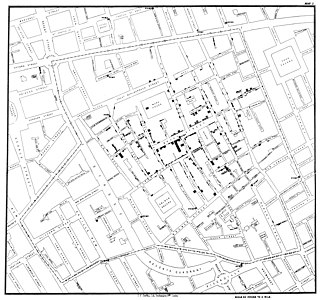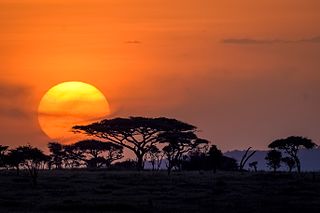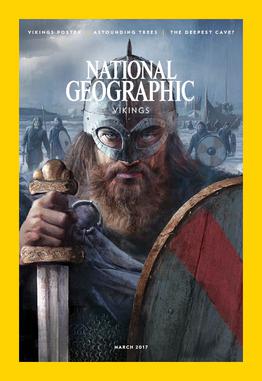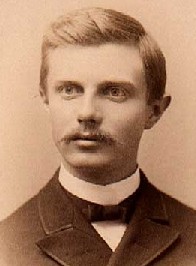
Human geography or anthropogeography is the branch of geography that studies spatial relationships between human communities, cultures, economies, and their interactions with the environment, examples of which is studied in schools are urban sprawl, and urban redevelopment. It analyzes spatial interdependencies between social interactions and the environment through qualitative and quantitative methods.

Steve Jackson Games (SJGames) is a game company, founded in 1980 by Steve Jackson, that creates and publishes role-playing, board, and card games, and the gaming magazine Pyramid.

The Serengeti ecosystem is a geographical region in Africa, spanning the Mara and Arusha Regions of Tanzania. The protected area within the region includes approximately 30,000 km2 (12,000 sq mi) of land, including the Serengeti National Park and several game reserves. The Serengeti hosts the second largest terrestrial mammal migration in the world, which helps secure it as one of the Seven Natural Wonders of Africa.
Social geography is the branch of human geography that is interested in the relationships between society and space, and is most closely related to social theory in general and sociology in particular, dealing with the relation of social phenomena and its spatial components. Though the term itself has a tradition of more than 100 years, there is no consensus on its explicit content. In 1968, Anne Buttimer noted that "[w]ith some notable exceptions, (...) social geography can be considered a field created and cultivated by a number of individual scholars rather than an academic tradition built up within particular schools". Since then, despite some calls for convergence centred on the structure and agency debate, its methodological, theoretical and topical diversity has spread even more, leading to numerous definitions of social geography and, therefore, contemporary scholars of the discipline identifying a great variety of different social geographies. However, as Benno Werlen remarked, these different perceptions are nothing else than different answers to the same two questions, which refer to the spatial constitution of society on the one hand, and to the spatial expression of social processes on the other.

The lion is a large cat of the genus Panthera native to Africa and India. It has a muscular, broad-chested body; short, rounded head; round ears; and a hairy tuft at the end of its tail. It is sexually dimorphic; adult male lions are larger than females and have a prominent mane. It is a social species, forming groups called prides. A lion's pride consists of a few adult males, related females, and cubs. Groups of female lions usually hunt together, preying mostly on large ungulates. The lion is an apex and keystone predator; although some lions scavenge when opportunities occur and have been known to hunt humans, lions typically do not actively seek out and prey on humans.

Jackson County is the northeasternmost county in the U.S. state of Alabama. As of the 2020 census, the population was 52,579. The county seat is Scottsboro. The county was named for Andrew Jackson, general in the United States Army and afterward President of the United States of America. Jackson County is a prohibition or dry county, but three cities within the county are "wet", allowing alcohol sales. Jackson County comprises the Scottsboro, AL Micropolitan Statistical Area, And Jackson county is included in the Scottsboro-Fort Payne combined statistical areas. It is the site of Russell Cave National Monument, an archeological site with evidence of 8,000 years of human occupation in the Southeast.

Right On! is an American teen magazine first published by the Laufer Company in 1971. It was headquartered in New York City. It continued publishing on a regular basis until 2014, focusing on African-American celebrities. The magazine was acquired by Right On! Media Holdings, LLC in 2016, which promotes its digital platform, rightondigital.com and publishes select print titles.

National Geographic is an American monthly magazine published by National Geographic Partners. The magazine was founded in 1888 as a scholarly journal, nine months after the establishment of the society, but is now a popular magazine. In 1905, it began including pictures, a style for which it became well-known. Its first color photos appeared in the 1910s. During the Cold War, the magazine committed itself to present a balanced view of the physical and human geography of countries beyond the Iron Curtain. Later, the magazine became outspoken on environmental issues.

Frederick Jackson Turner was an American historian during the early 20th century, based at the University of Wisconsin-Madison until 1910, and then Harvard University. He was known primarily for his frontier thesis. He trained many PhDs who went on to become well-known historians. He promoted interdisciplinary and quantitative methods, often with an emphasis on the Midwestern United States.

St. George Jackson Mivart was an English biologist. He is famous for starting as an ardent believer in natural selection and later becoming one of its fiercest critics. Mivart attempted to reconcile the theory of evolution as propounded by Charles Darwin with the beliefs of the Catholic Church but was condemned by both Darwin and the Church. His belief in a soul created by God and insistence that evolutionism was not incompatible with the existence of such a God brought him into conflict with other evolutionists, while his theological theories on hell and on the compatibility between science and Catholicism led him to clash with the Church.
John Brinckerhoff "Brinck" Jackson was a writer, publisher, instructor, and sketch artist in landscape design. Herbert Muschamp, architecture critic of the New York Times, stated that J. B. Jackson was "America's greatest living writer on the forces that have shaped the land this nation occupies." He was influential in broadening the perspective on the "vernacular" landscape.

"Human Nature" is a song performed by American singer Michael Jackson, and the fifth single from his sixth solo album, Thriller. The track was produced by Quincy Jones and performed by members of Toto with Michael Jackson providing vocals.
Jackson Advocate is an African-American weekly newspaper in Jackson, Mississippi.

Jackson Hill is an unincorporated community in Hamilton Township, Sullivan County, in the U.S. state of Indiana.
Cottageville is an unincorporated community in western Jackson County, West Virginia, United States. It lies along West Virginia Route 331 northwest of the city of Ripley, the county seat of Jackson County. Established in 1858, its elevation is 594 feet (181 m). Although Cottageville is unincorporated, it has a post office, with the ZIP code of 25239. It also is the site of the annual Jackson County Junior Fair. Michael Coleman, a well known early Indian fighter, was killed and buried in the area, according to a historical marker placed by the state of WV. The wooden Grist Mill located here since the 1840s burned to the ground in the summer of 1965. Its foundation stones remain. It had remained in operation full-time until 1930, part-time until 1937. Cottageville was a commercial center with a bank, newspaper, tannery, blacksmith, several stores, a railroad station on the B & O and many other businesses in the early part of the twentieth century. Its heyday faded with the closing of the mill and the improvement of roads in the county. The B & O pulled up its tracks to the county seat, Ripley, in the mid-nineteen-sixties. Less than a mile from the old town, the county operated what folks called the "poor farm," an early version of a welfare commune. That closed in the thirties with the New Deal. That land is now the Jackson County Junior Fairgrounds.
The Jerry River is a river of the southwestern South Island of New Zealand. It flows northwest into the Gorge River, which flows into the Tasman Sea between Jackson Bay and Big Bay.

Charles E. "Charlie" Cobb Jr. is a journalist, professor, and former activist with the Student Nonviolent Coordinating Committee (SNCC). Along with several veterans of SNCC, Cobb established and operated the African-American bookstore Drum and Spear in Washington, D.C., from 1968 to 1974. Currently he is a senior analyst at allAfrica.com and a visiting professor at Brown University.
Frank Cooper Craighead Jr. and John Johnson Craighead, twin brothers, were American conservationists, naturalists, and researchers who made important contributions to the studies of falconry and grizzly bear biology. The brothers were born in Washington, D.C. where both graduated from Western High School in 1935. The brothers began collecting and identifying animals and plants they found alongside the Potomac and soon expanded their interests to birds and hawks. They traveled west in 1934 to begin studying falconry. After World War II, during which they were employed as survival trainers, they each married and resumed their work in falconry. During the 1950s, the Craighead brothers expanded their work to other animals, including many species living in and around Yellowstone, and eventually separated.
Peter Jackson, FBA, FAcSS is a British human geographer. Since 1993, he has been professor of human geography at the University of Sheffield.
Banner is an unincorporated community in Franklin Township, Jackson County, Ohio, United States. It is located between Jackson and Oak Hill near the intersection of Clay Banner Road and Franklin Valley Road.











